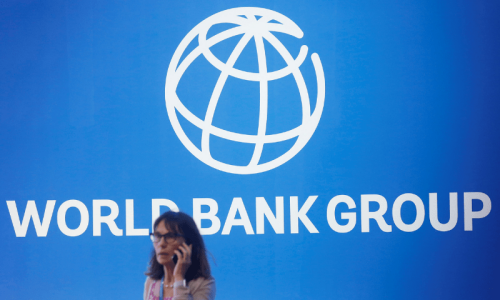Pakistanis privately spend about as much as the government to pull less fortunate fellow citizens out of the depths of poverty and derivation. While charity is given all year round, the donations dispersed in Ramazan are estimated to be more than what the nation doles out during the rest of the 11 months put together.
The fact supports the perception that the culture of giving in Pakistan is rooted in the dominant belief system in the country. Islam ordains Muslims to spend at least 2.5pc of their accumulated wealth on the needy. Anecdotal evidence hints that at least 60pc of all Pakistani households support charitable causes or give directly to those in need.
Usually people prefer to distribute Zakat, the mandatory minimum, as soon as the month starts. The philanthropic organisations, therefore, strategise to collect funds when people are believed to be more generous. Khairat, fitra and other forms of donations are also made in this month.
The desperate poor collect information of approachable dispersal points to get help in cash and kind and philanthropic institutions invest liberally to mobilise funds using moving messages, images and appeals through print and television as well as leaflets, billboards and banners. Little wonder that the face of poverty in urban Pakistan, despite sluggish Gross Development Product (GDP) growth, is not as horrific as it is in galloping India and other countries of the region.
It also explains why the some of the biggest and most prestigious philanthropic organisations of the world such as Edhi Foundation, Sindh Institute of Urology and Transplantation, Citizens’ Foundation, Shaukat Khanum Hospital among others are located here. The culture of giving seems to be compensating, though partially, for the neglect of the needy by the state.
The total quantum of giving in Pakistan is projected to be a whopping Rs200 billion in the current year. The total pro-poor spending by the government, even if one includes spending on social facilities such as education and health besides the Benazir Income Support Programme of Rs84 billion, does not go much beyond Rs200 billion. How much of this actually reaches the targetted beneficiaries? My guess is as good as yours.
There is no way of knowing exactly how much people donate collectively in a year as it is usually done quietly by families. For the purpose of analysis, the above-mentioned number was projected on the basis of extrapolation of estimates projected in a study conducted 13 years back. The study, National survey of individual giving, was carried out by the Aga Khan Foundation with the support of an assortment of international development institutions. The report published in 2000 quantified the quantum of giving and tossed a figure of Rs70 billion. It included all: monetary donations, volunteer time and gifts in kind.
In the last 13 years the economic dynamics of the country have changed in terms of wealth generation in the service sector and massive growth of the informal economy. The rate of inflation that has stabilised slightly recently was, at times, as high as over 25pc during the past decade and a half. Besides this, direct donations from overseas Pakistanis have seen a quantum jump. It has multiplied also because the rupee has shed value against the dollar. Back in 2000, one dollar was worth Rs52 as against Rs101 in the currency market today.
The Pakistan Centre for Philanthropy, an Islamabad-based NGO, claims the total amount of private donations in 2010 to be Rs140 billion. The centre certifies credible NGOs to facilitate donors. Its focus, it says in its literature, is to streamline social development by sensitising the society about issues affecting growth in the social sector.
Pakistan was called a nation of socially irresponsible citizens because of low tax to GDP ratio by a senior US leader some years back. The high dole-out rate in Pakistan shows that the people probably evade and avoid paying taxes not to serve some selfish streak in their character but primarily because of the low credibility of the government as efficient custodian of the people’s economic rights.
Many people lack trust in the government because of its inefficiency and ineffectivity. This mistrust can also be gauged from the way people treat forced deduction of Zakat on their savings in banks. Most account holders use all kinds of tricks to avoid deduction. Until recently, when it became permissible for anyone to file a Zakat exemption form, many people filed a bogus affidavit claiming to belong to a religious sect that was exempt from forced Zakat collection. The actual total donation by a household and their order of preference for the recipients of their donation depend on innumerable factors. Some prefer to support social welfare causes while others are driven by their religious leanings.
Some experts on the subject believe that if this huge voluntary transfer of wealth to the poor can be streamlined, the benefit to the society can multiply manifold. Others feel that the societal trend of lending help to people in need may be commendable but there are issues of efficiency and credibility involved here as well. They say that had this massive transfer been efficient, it would have changed the socio-economic scenario that continues to be highly inequitable.
The massive activity, they feel, generates a façade of caring and sharing while the structural flaws in the economy that generate and perpetuate poverty and inequality in economic opportunities remain in place. Charity is good but unfortunately not an answer to a dysfunctional economic system that fails to absorb the working-age population into the economic mainstream.
By offering temporary relief it shifts the focus of the society from the failings of the government in providing a social security net for the vulnerable and a decent social and physical infrastructure. Critics say it indirectly helps irresponsible, inefficient, self-serving rulers to disengage with their governance responsibilities and hide behind the smokescreen of free market economy.










































